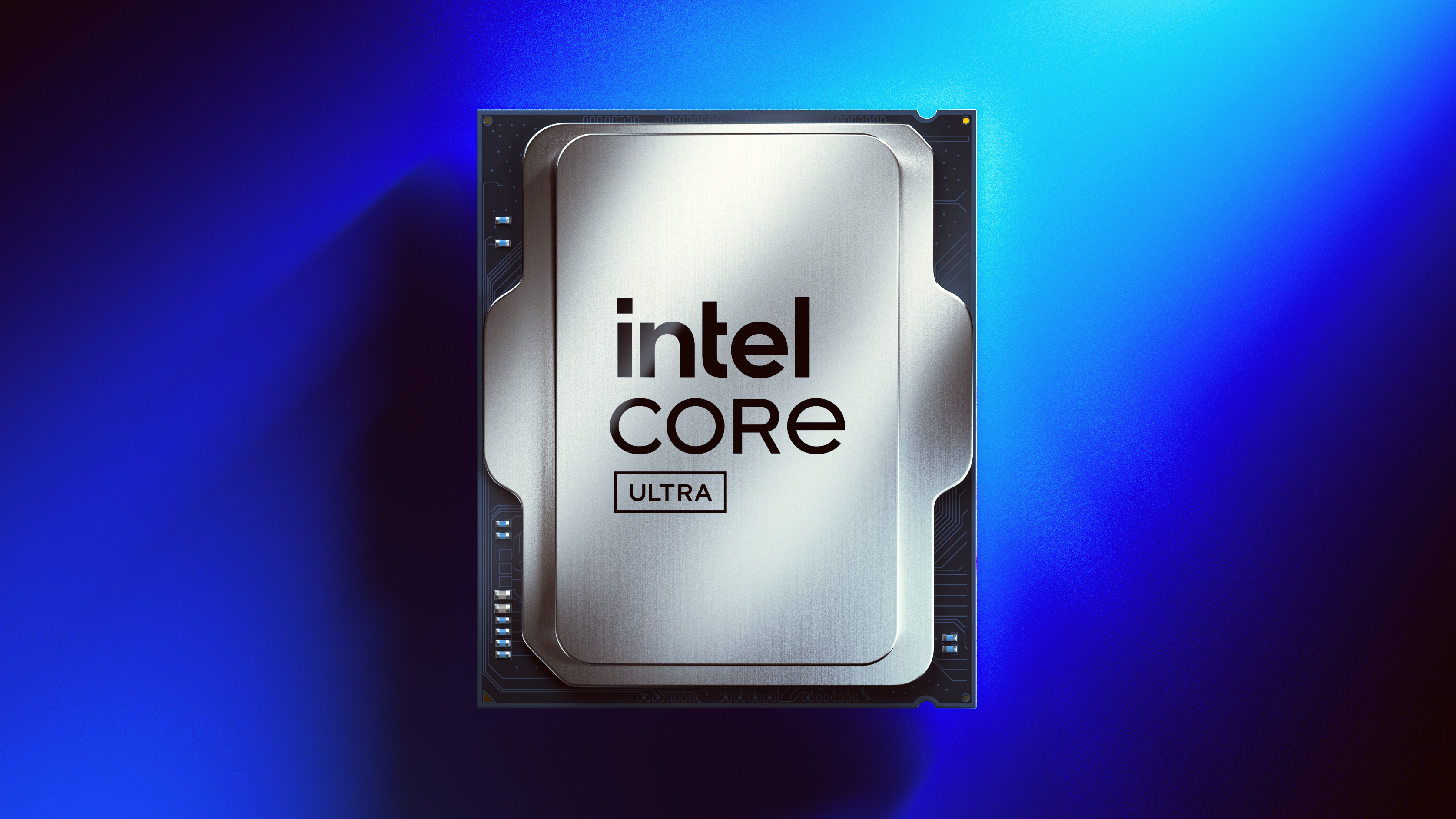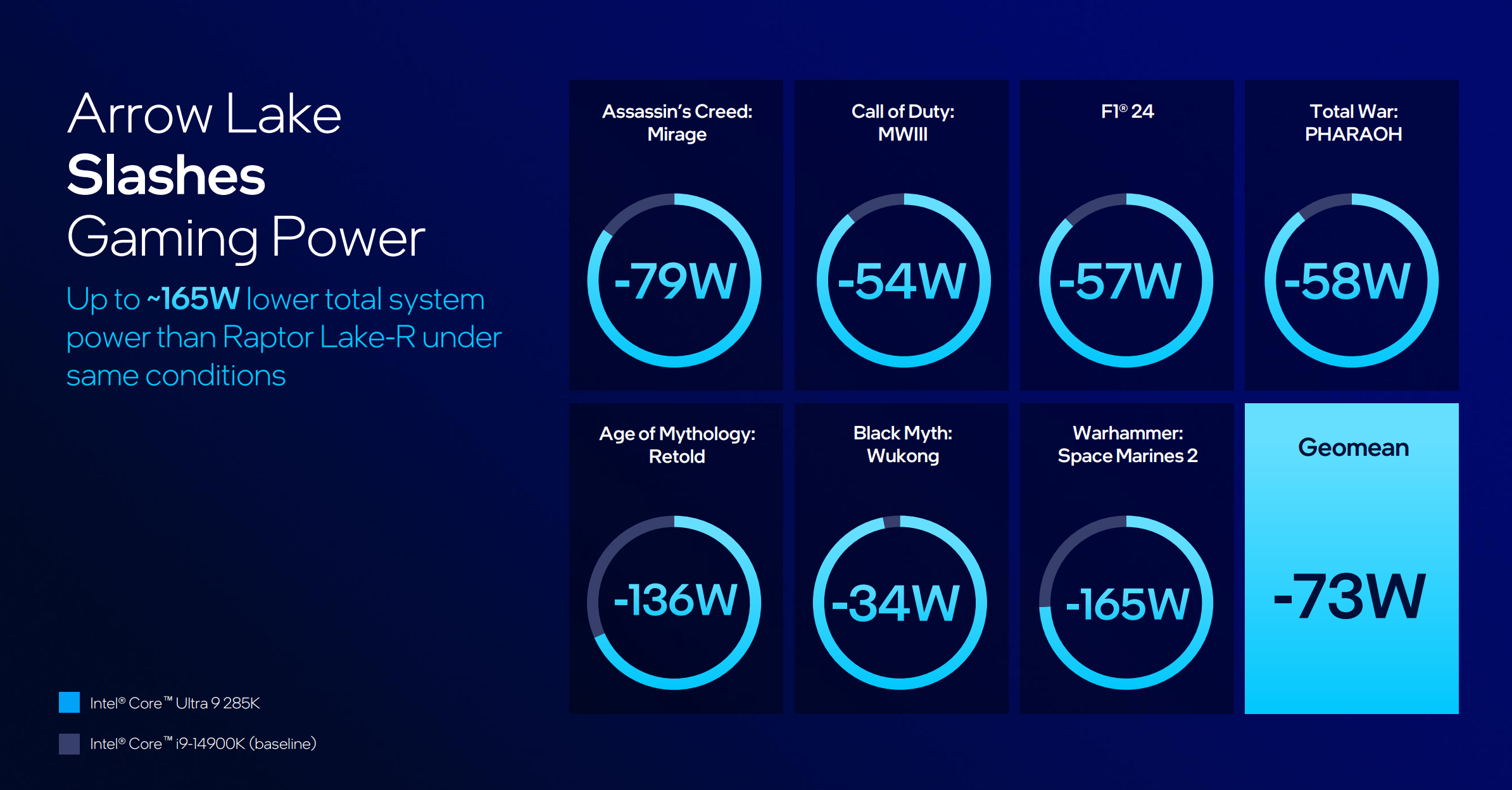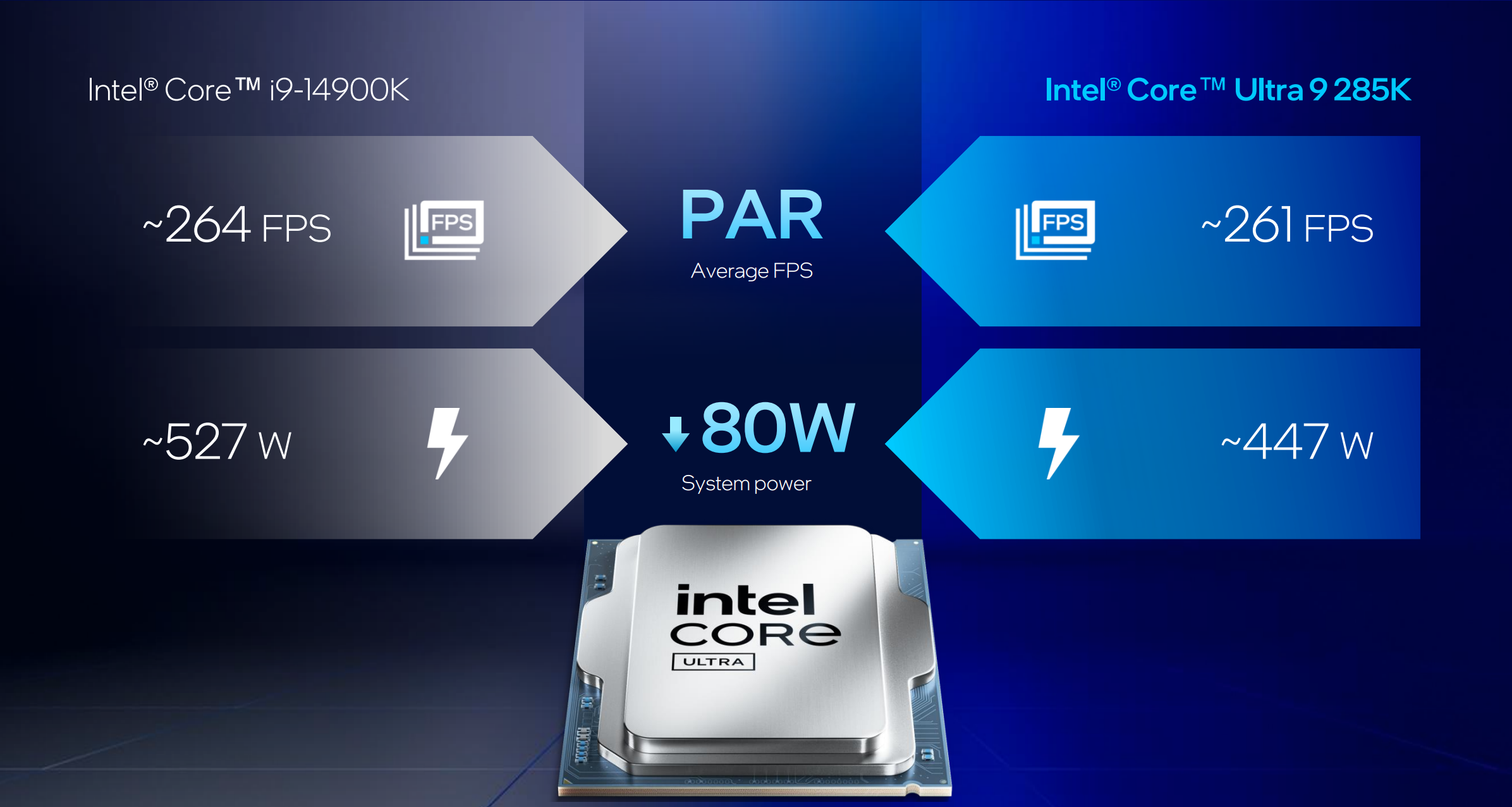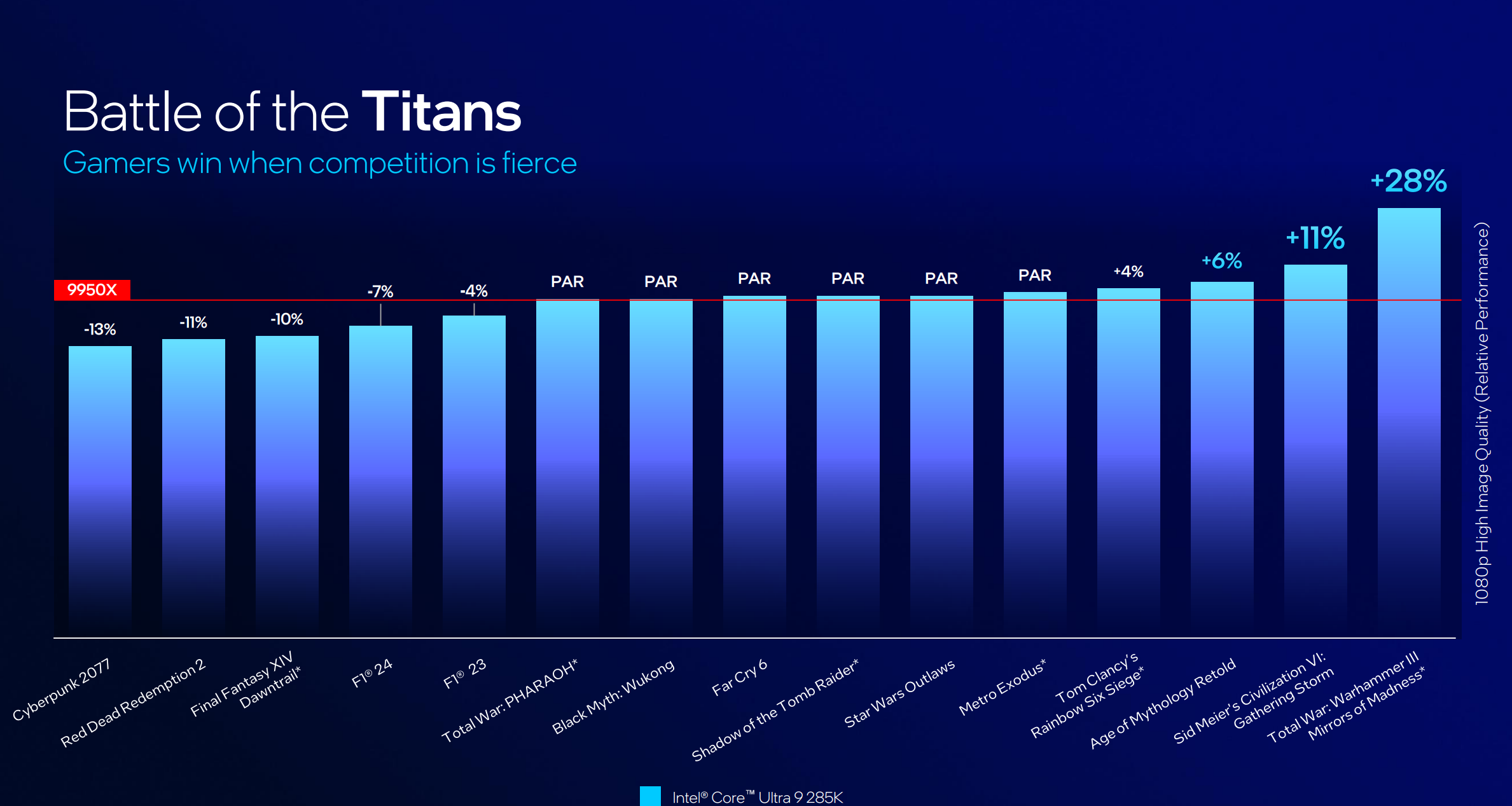Intel's first Arrow Lake CPUs are here, and they're all about power efficiency
The first Intel desktop chips with NPUs have arrived

Intel has finally unveiled the first round of Arrow Lake CPUs to hit the market, and they promise better performance than their predecessors for less power.
This is potentially a big deal because in addition to their improved efficiency, these are the first desktop CPUs Intel has released with an onboard Neural Processing Unit (NPU).
So while these first Arrow Lake chips aren't delivering huge performance gains over their Intel Raptor Lake predecessors, they do promise to deliver similar performance for less power and heat, with the additional advantage of onboard NPUs.
NPUs have been all the rage in laptop chips over the last year or two because they're optimized to chew through the kinds of workloads that most AI apps demand, so having a CPU with a powerful (and power-efficient) NPU has become important if you care about taking advantage of AI-centric features like those available on Copilot+ PCs.
Of course, Microsoft only makes those Copilot+ features available on Windows 11 machines with NPUs capable of achieving 45+ TOPS (trillion operations per second), and since these new Arrow Lake CPUs all deliver just 13 TOPS they likely won't be able to support those advanced features.
But most AI applications these days are capable of utilizing all of the processing power in your PC to run, not just the NPU, so pairing a beefy graphics card (like the Nvidia GeForce RTX 4090) with one of these new Arrow Lake chips will ensure you'll have more than enough computing muscle to chew through AI apps running locally on your PC.
Here's everything you need to know about the new Intel Arrow Lake chips dropping October 24.
Sign up to get the BEST of Tom's Guide direct to your inbox.
Get instant access to breaking news, the hottest reviews, great deals and helpful tips.
Intel Arrow Lake: Price & release date
Intel is releasing five Arrow Lake desktop CPUs to start, and you'll be able to order them from participating retailers starting October 24 at a starting MSRP of $294 for the Intel Core Ultra 5 245KF.
But that's the entry-level Arrow Lake CPU, which has the lowest clock speed and fewest cores available. To purchase the beefy Intel Core Ultra 9 285K, the flagship top-of-the-line Arrow Lake CPU, you can expect to pay a cool $589.
Intel Arrow Lake: Specs
Intel is releasing an inaugural batch of five Arrow Lake CPUs to start, with core counts ranging from 14-24 and speeds from 5.2-5.7 GHz. They all have onboard NPUs capable of 13 TOPS, and most have 4-core onboard GPUs.
As usual, the chips with -F in the name don't come with onboard GPUs, so you'll need to pair them with a discrete AMD, Intel or Nvidia graphics card in a PC.
| Header Cell - Column 0 | CPU cores | Max GHz | GPU Xe cores |
|---|---|---|---|
| Intel Core Ultra 5 245KF ($294) | 14 (6 performance, 8 efficiency) | 5.2 GHz | 0 |
| Intel Core Ultra 5 245K ($309) | 14 (6 performance, 8 efficiency) | 5.2 GHz | 4 |
| Intel Core Ultra 7 265KF ($379) | 20 (8 performance, 12 efficiency) | 5.5 GHz | 0 |
| Intel Core Ultra 7 265K ($394) | 20 (8 performance, 12 efficiency) | 5.5 GHz | 4 |
| Intel Core Ultra 9 285K ($589) | 24 (8 performance, 16 efficiency) | 5.7 GHz | 4 |
Intel Arrow Lake: Performance improvements

Intel isn't promising that its new Arrow Lake CPUs will deliver major gains in performance over previous chips. Instead, it's trying to pitch these chips as the start of a new generation of NPU-equipped Intel desktop CPUs that are more efficient than prior models, with a lot of room to grow in terms of performance.
That's a nice way of saying this first round of Arrow Lake chips don't appear to be much more powerful than the top-of-the-line Raptor Lake chips Intel released late in 2023. However, they do promise to draw less power and run cooler while delivering comparable power.
As you can see from the charts above and below (which were provided by Intel), the company claims its new flagship Arrow Lake desktop CPU is on par with the top-of-the-line Intel Core i9-14900K in terms of performance, yet demands significantly less power to do the same work.

This may not be the most exciting marketing campaign for performance freaks who just want to build the fastest, most capable gaming PC they can, but it's good news for efficiency nerds like me who are getting a little tired of watching our power bills spike during marathon gaming sessions.
Intel also provided some of its own internal benchmarks of gaming performance on the new flagship Intel Core Ultra 9 285K ($589) vs. the top-of-the-line AMD Ryzen 9 9950X ($649), and the results are mixed.

As you can see from the chart of benchmark results embedded above, Intel isn't promising its new top-tier CPU can reliably beat AMD's best.
Instead, it claims that (at least at 1080p on high settings) the results are mixed, with AMD's top-tier chip delivering better performance in games like Cyberpunk 2077 and Red Dead Redemption 2 while the new Arrow Lake flagship delivers more frames per second in games like Total War: Warhammer 3 and Sid Meier's Civilization VI: Gathering Storm.
Of course, we'll have to wait until these Arrow Lake chips get out into the market and enthusiasts start benchmarking them under real-world conditions to really know how well they perform.
Intel Arrow Lake: Outlook
I have to say, I find Intel's frank and efficiency-first marketing of these first Arrow Lake chips to be kind of refreshing in a market dominated by flashy marketing campaigns and big promises.
While gaming enthusiasts may understandably be underwhelmed by the promised performance gains of these first Arrow Lake CPUs vs. their Raptor Lake predecessors, I believe it when Intel says they represent the floor of a new CPU family with lots of room to grow.
Intel has been on the back foot for a few years now as it tries to compete with Apple, AMD and now Qualcomm in the laptop chip business, which is all about delivering great performance with minimal heat and power draw. And while Intel continues to lag behind the competition in a number of key metrics, we're seeing the fruits of its labor show up in cooler, quieter desktop CPUs.
The problem is, I don't know how much of a difference that will make in high-end PCs optimized for gaming and content creation. Sure, it's great if your new high-end CPU draws 50-100 watts less power (on average) than your old one, but how much of a difference will that makes in a beefy gaming rig with an Nvidia GeForce RTX 4090 sucking down 450-800 watts of power in an intense gaming session?
However, these new Arrow Lake chips could be a huge boon for mini PCs, especially mini gaming PCs, because small cases are where quiet, cool high-performance CPUs really shine. Of course, we'll have to wait until the end of October to see how much of an impact they really make.

Alex Wawro is a lifelong tech and games enthusiast with more than a decade of experience covering both for outlets like Game Developer, Black Hat, and PC World magazine. A lifelong PC builder, he currently serves as a senior editor at Tom's Guide covering all things computing, from laptops and desktops to keyboards and mice.
-
Armsman With the reduced power and thermals while matching 14th gen performance, I predict this will be an overclocking monster, easily outperforming any competition with thermals and power draw being no worse than current gen i9.Reply
